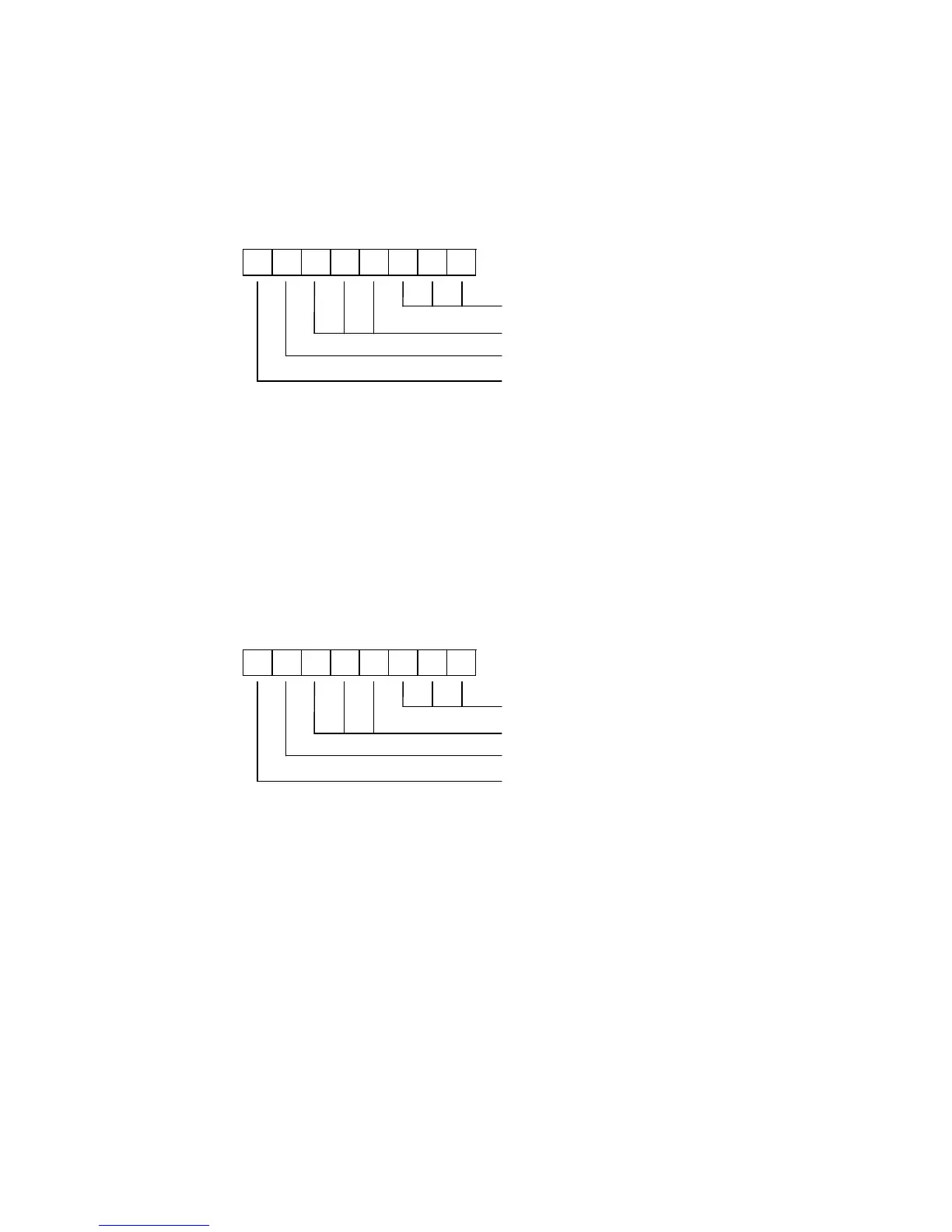Chapter 4
34
Half cell
In basic colours mode using single byte colour, the ink colour for the left and right
halves of each cell can be set independently to any of the basic 8 colours. The paper
colour is always black. The format of each attribute cell is as follows:
Right half ink, ordered as GRB
Left half ink, ordered as GRB
1=Bright
1=Flash
The bright bit applies to the full cell and allows a total of 16 different colour values to
be produced, although only 15 of these are unique since black and bright black
display the same. The flash bit applies to the full cell and when set causes the ink
colours to swap over with the paper colour at a fixed frequency of 1.565 Hz.
In basic colours mode using double byte colour, the first attribute cell byte defines the
ink colour for the two halves of the cell and the second attribute cell byte defines the
paper colour for the two halves of the cell. Both bytes are formatted as follows:
Right half colour, ordered as GRB
Left half colour, ordered as GRB
1=Bright
1=Flash
The format encodes the left ink, the right ink, the left paper and the right paper using 3
bits, yielding each a range of 8 colours. Both bytes include a bright bit, allowing a total
of 16 different colour values to be produced for the ink and 16 for the paper, although
in each instance only 15 of these are unique since black and bright black display the
same. The brightness of the left ink and right ink will always be the same, and likewise
the brightness of the left paper and right paper will always be the same.
With the flash bit in both attribute cell bytes set, all ink and paper colours in the cell
swap over at a fixed frequency of 1.565 Hz. However, if only the ink attribute byte’s
flash bit is set then just the ink coloured pixels in the cell swap between the ink colour
and the paper colour, and if only the paper attribute byte’s flash bit is set then just the
paper colour pixels in the cell swap between the paper colour and the ink colour.
